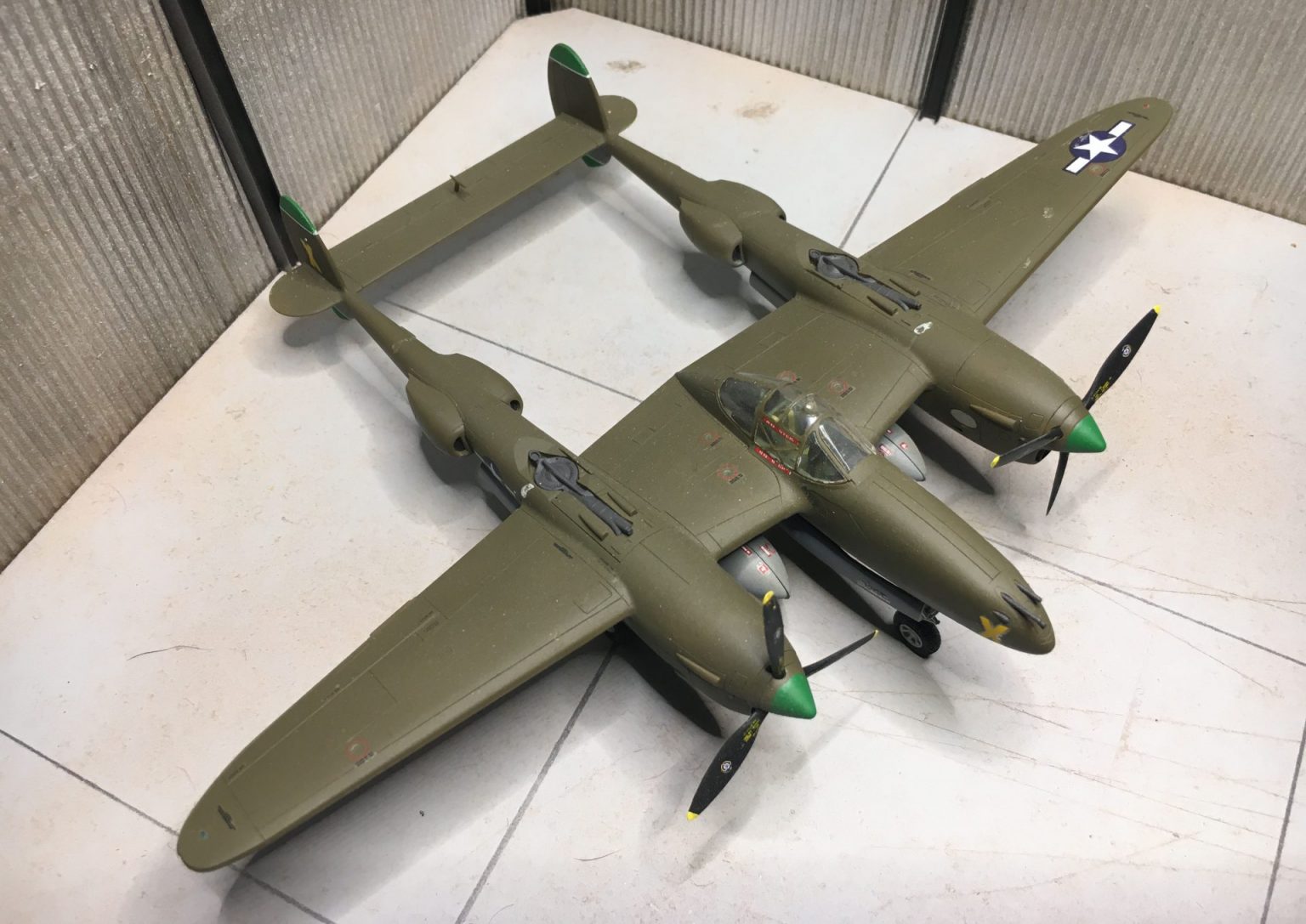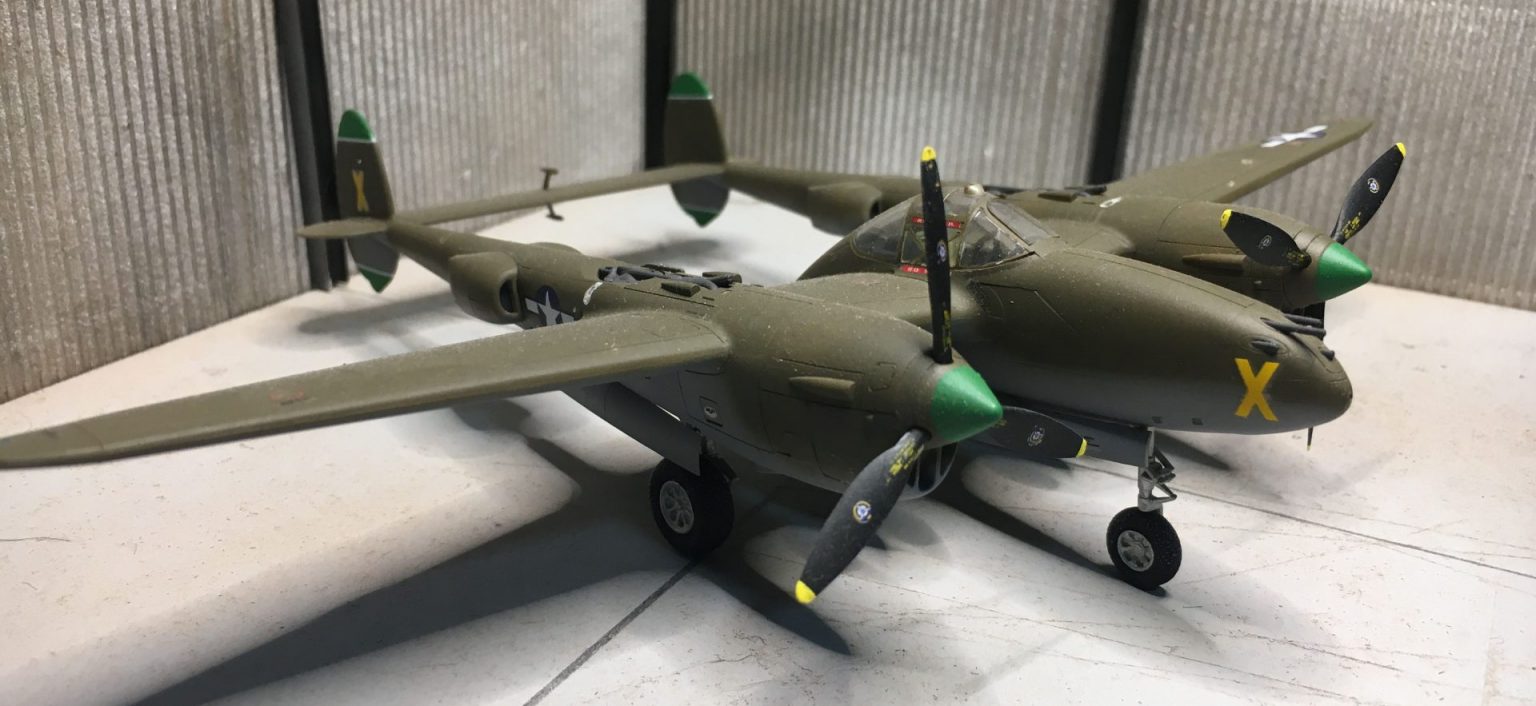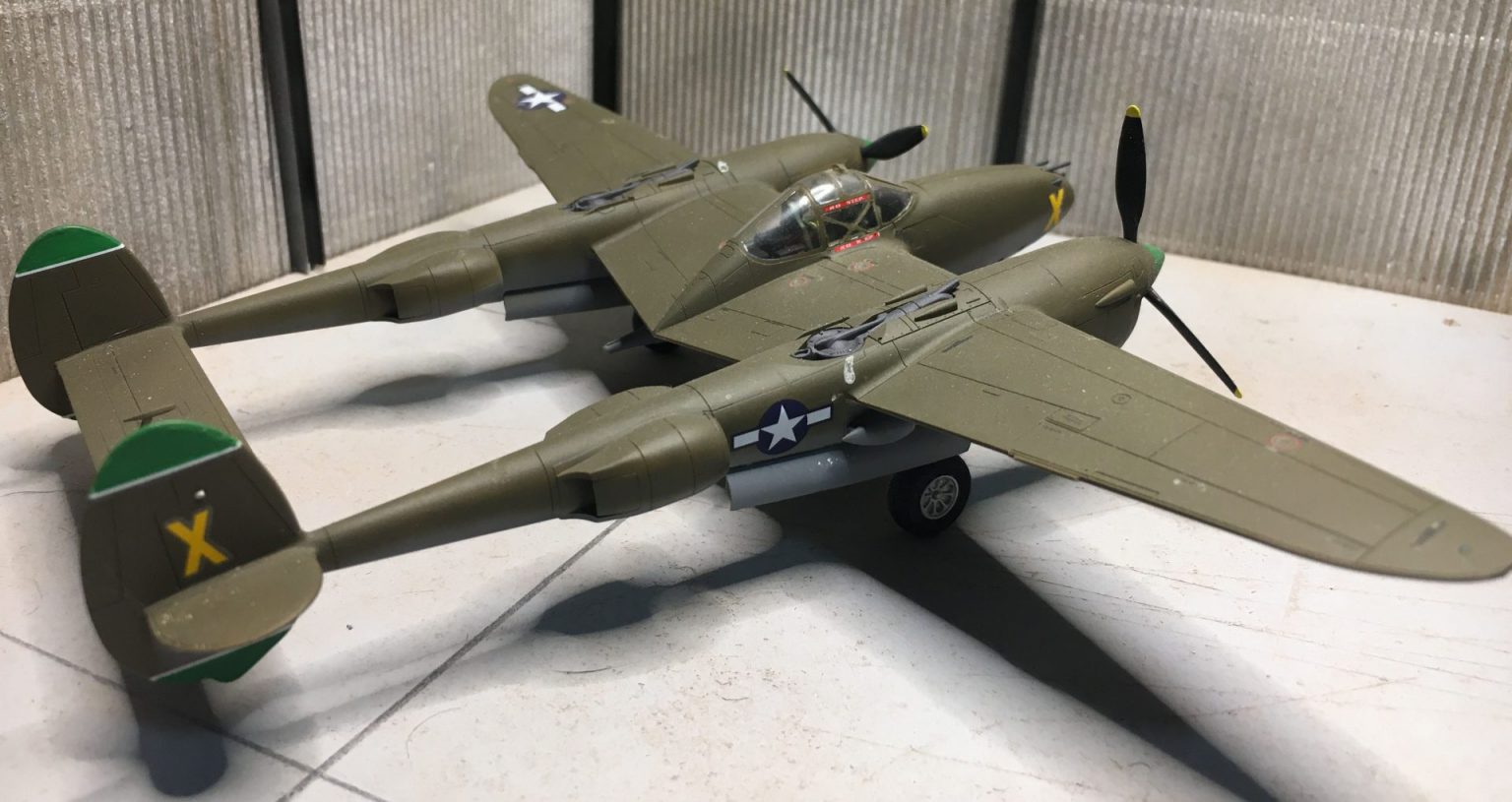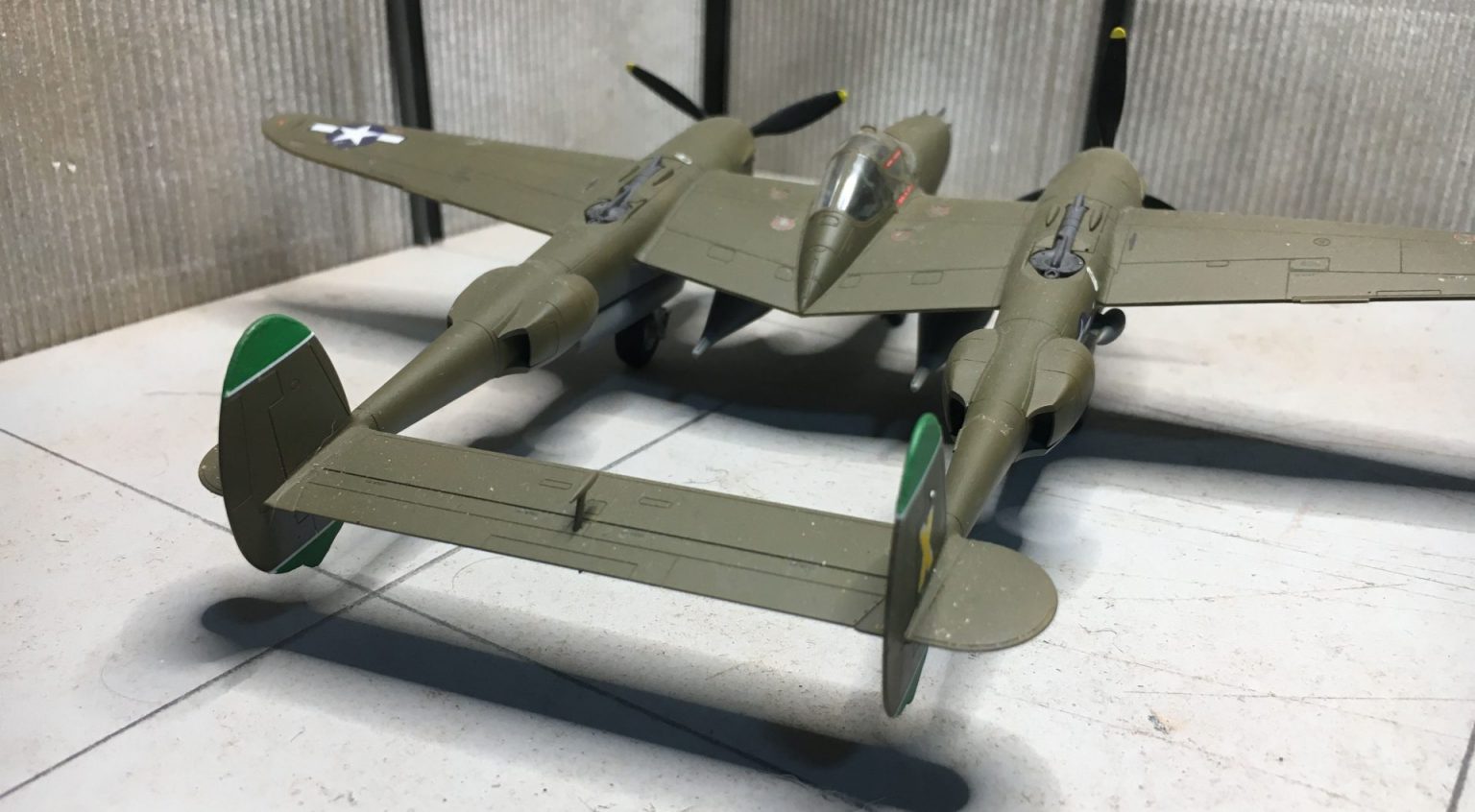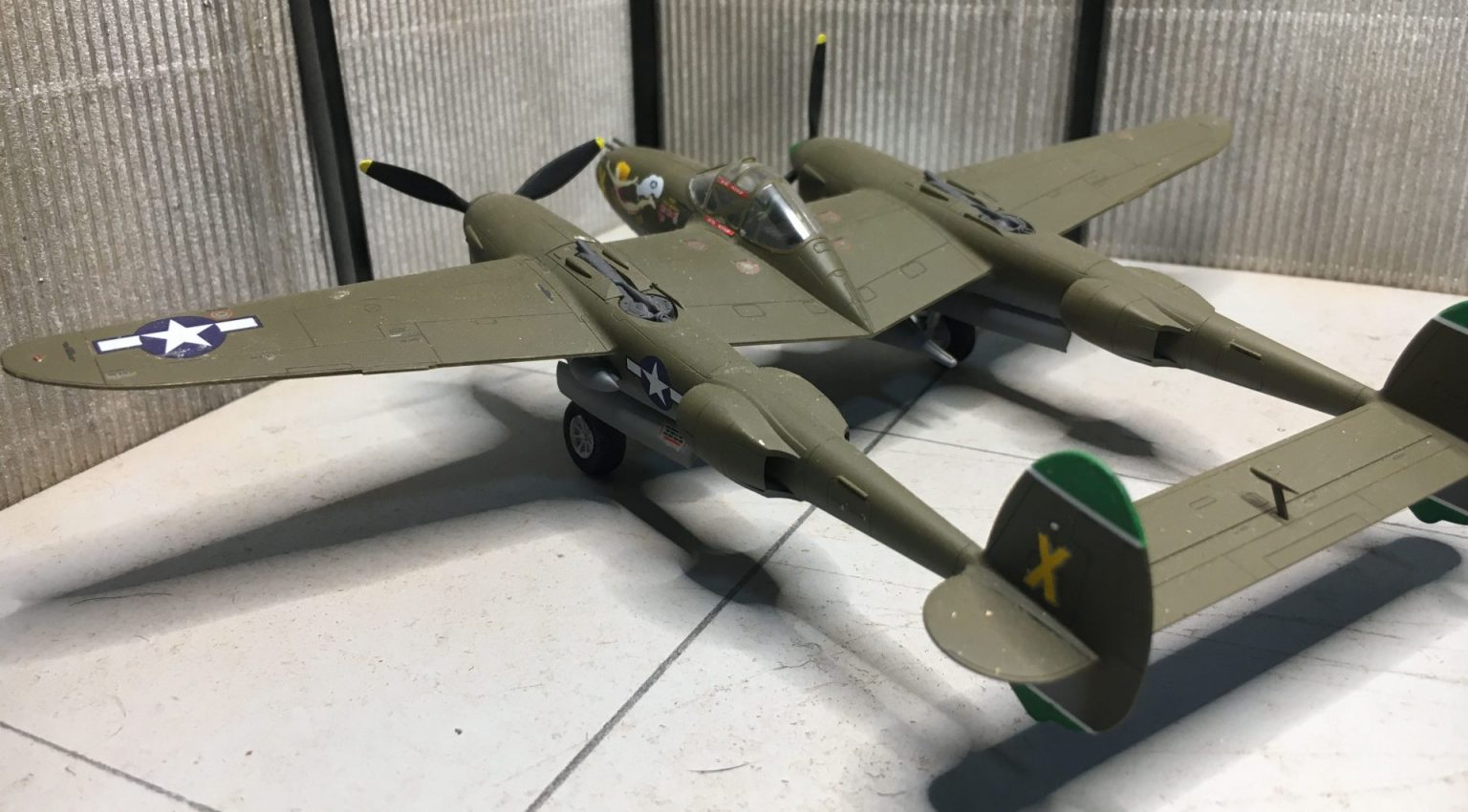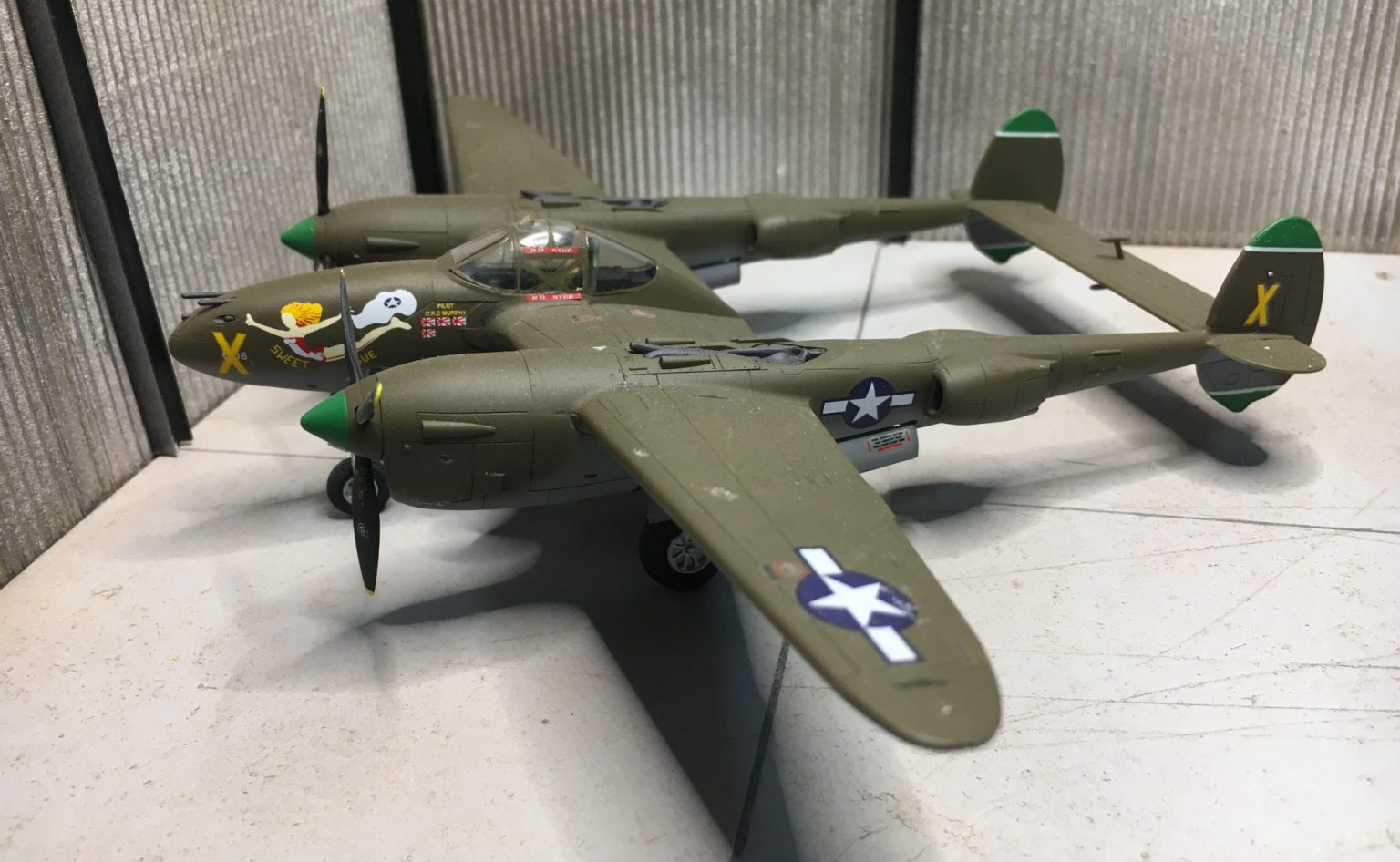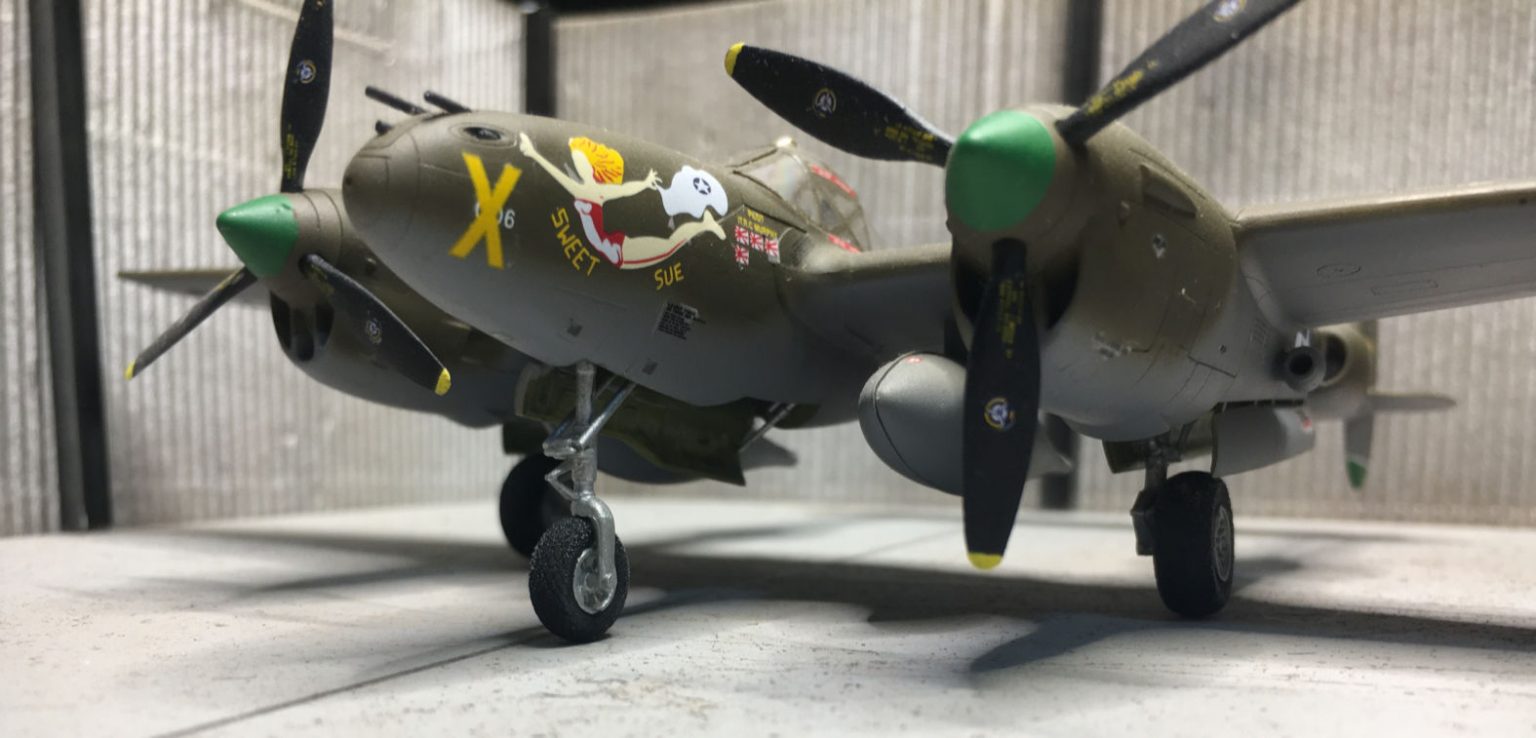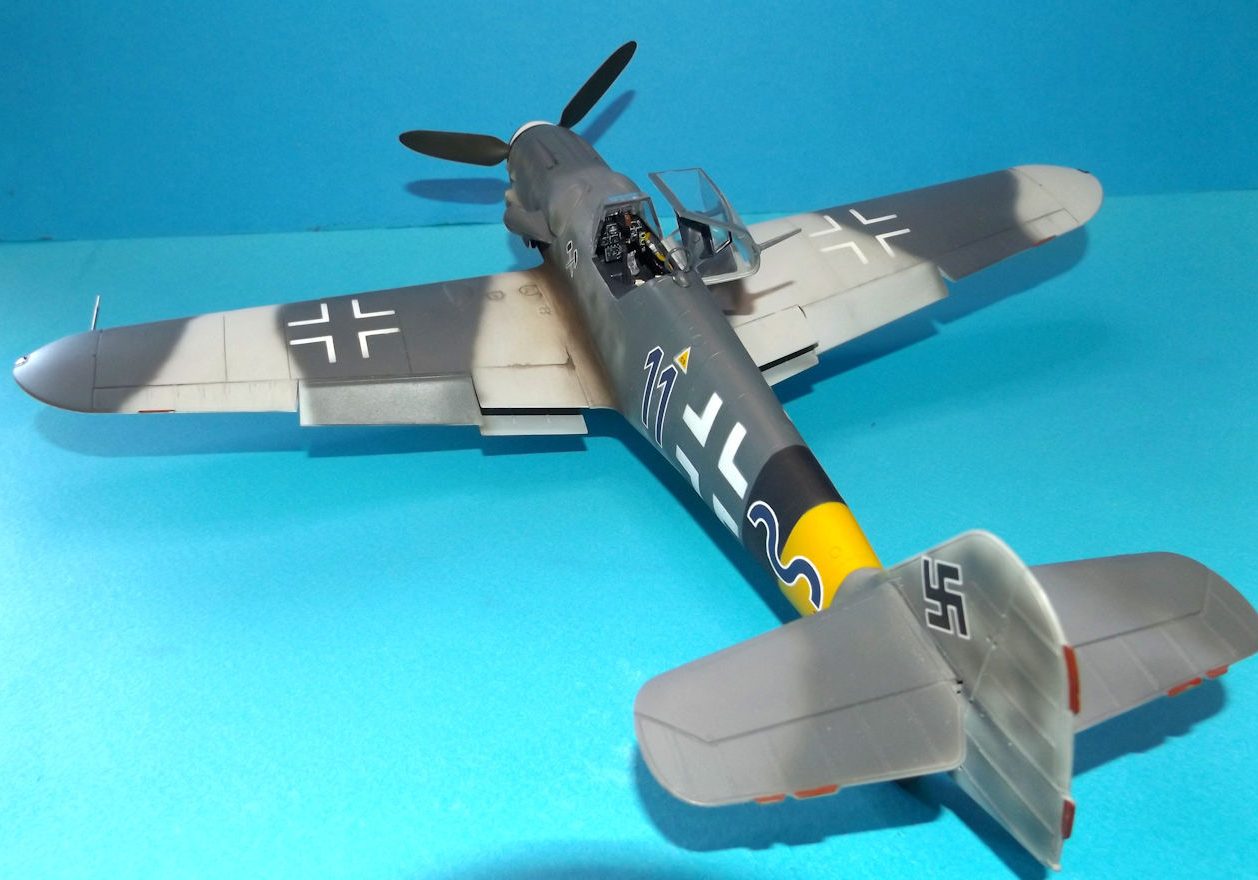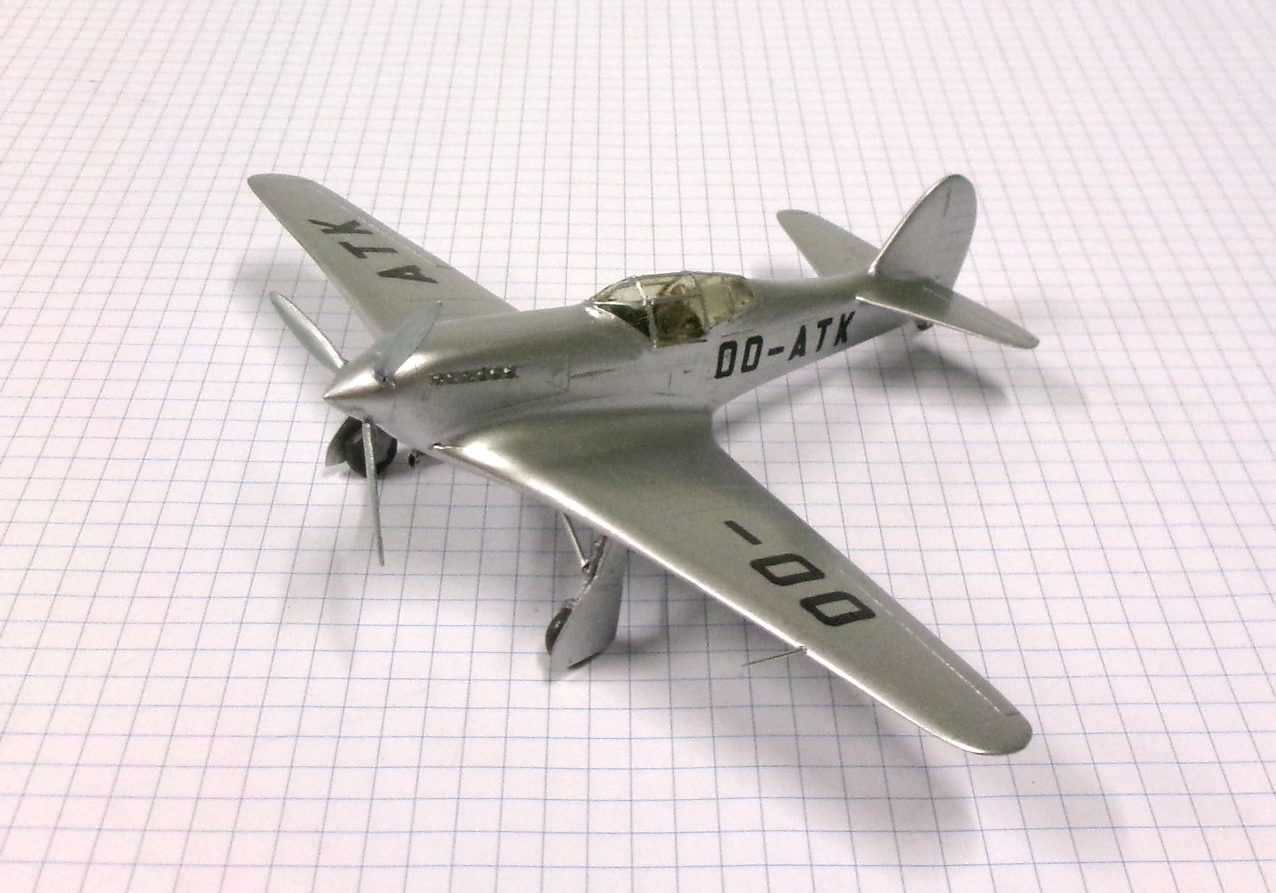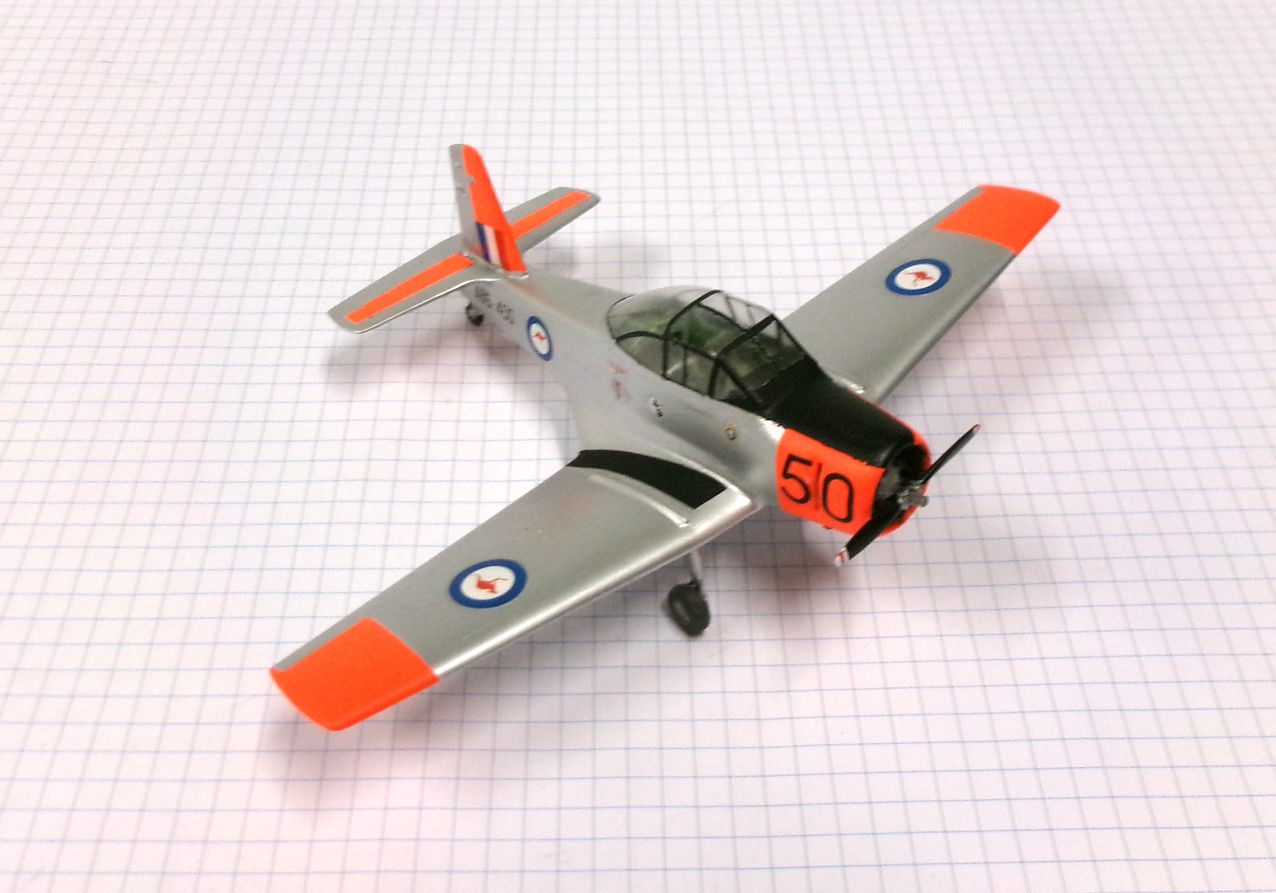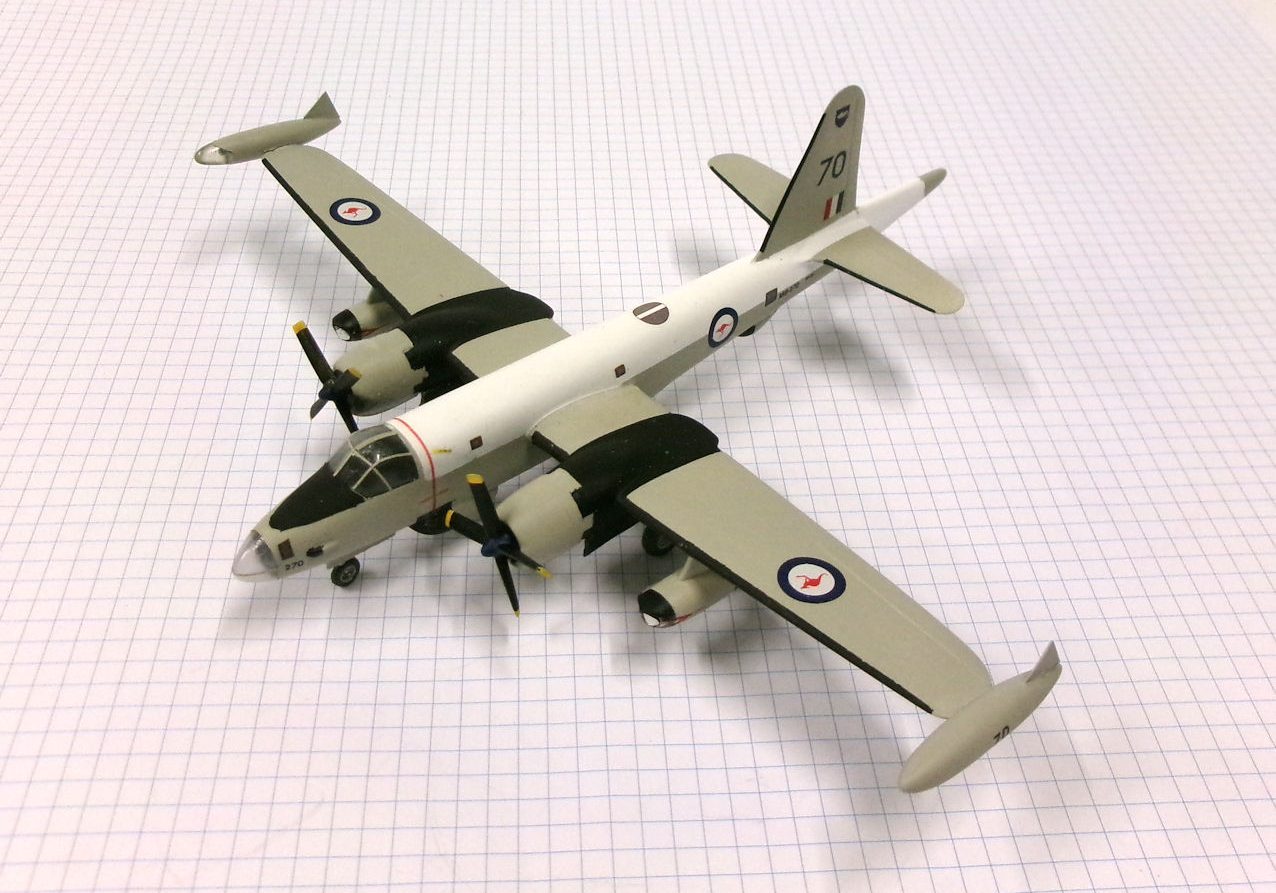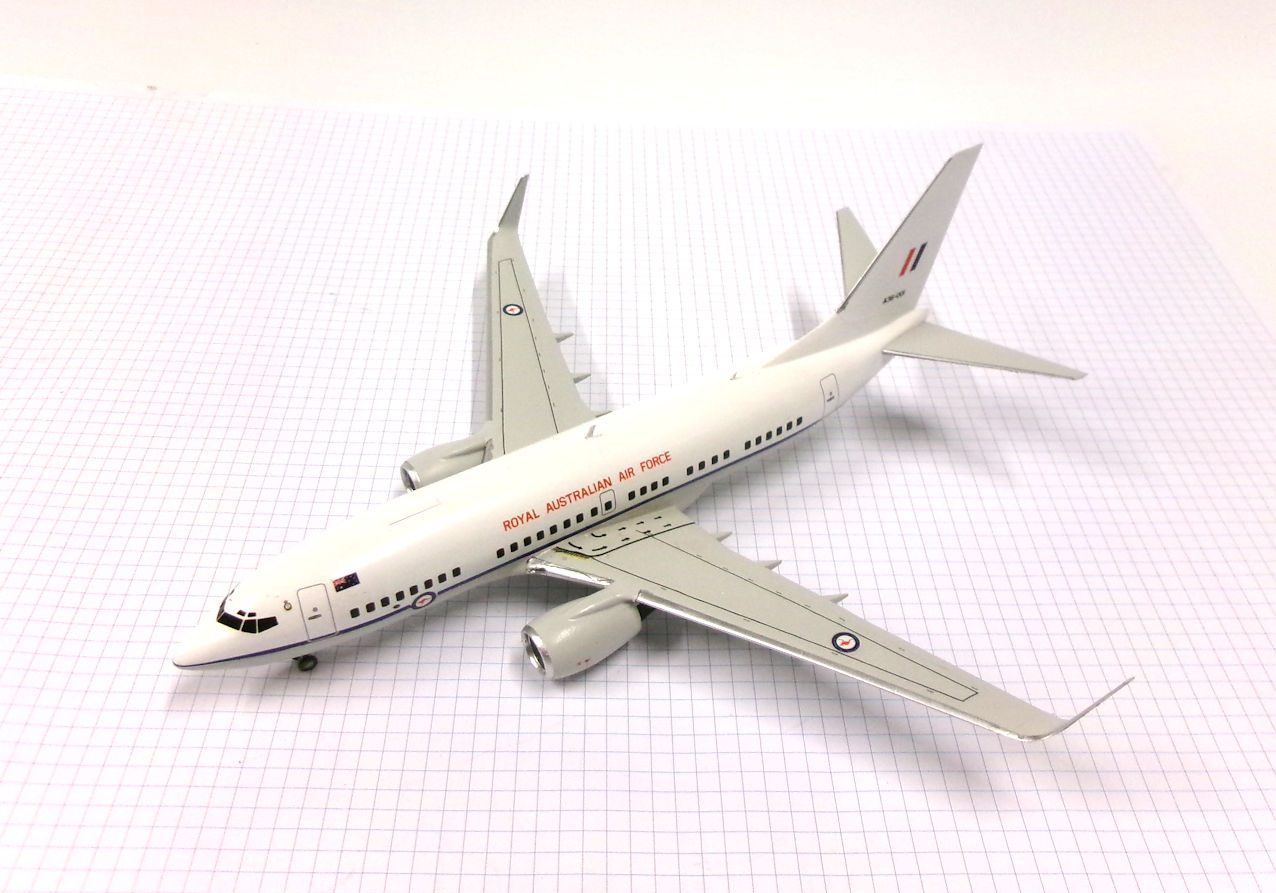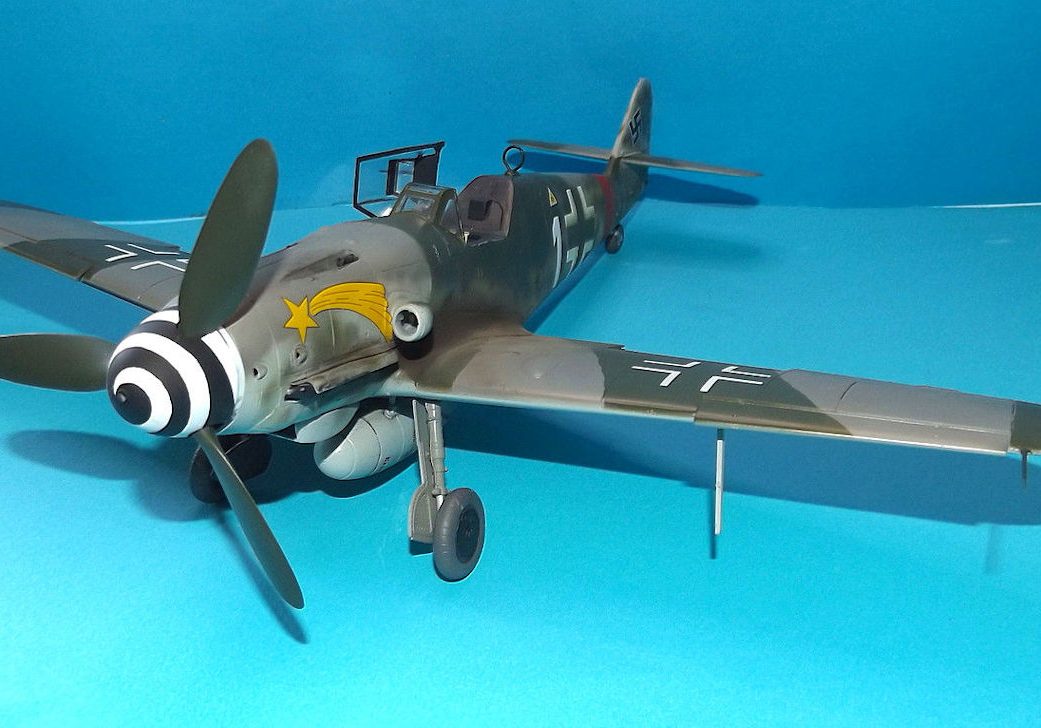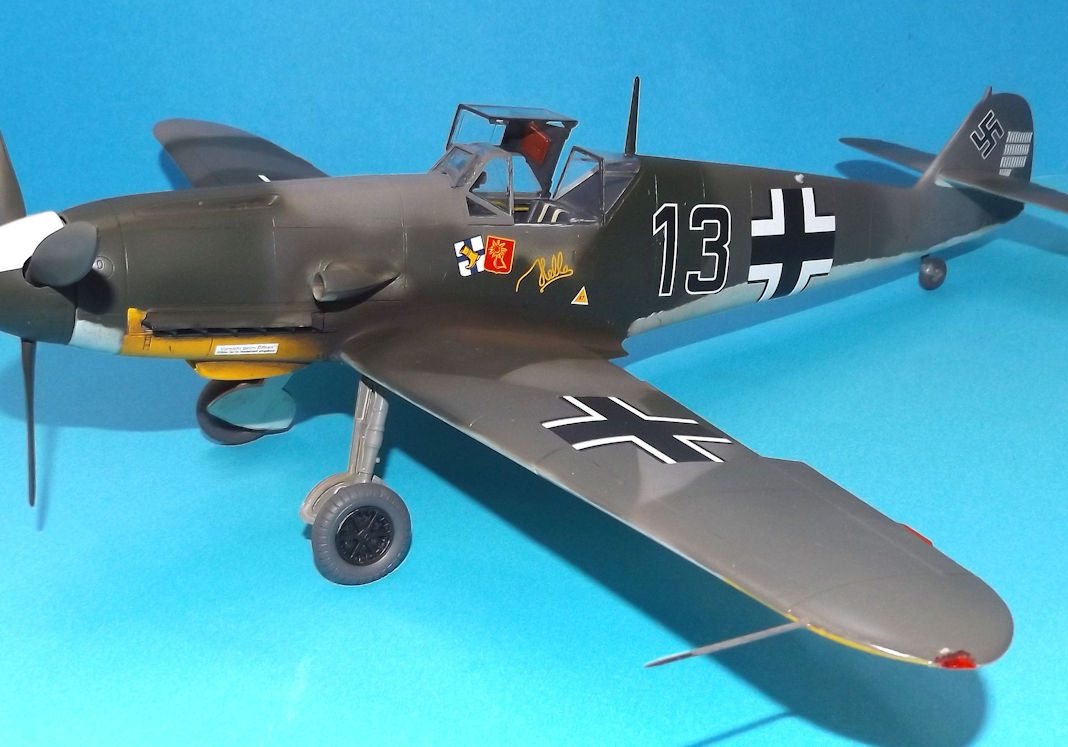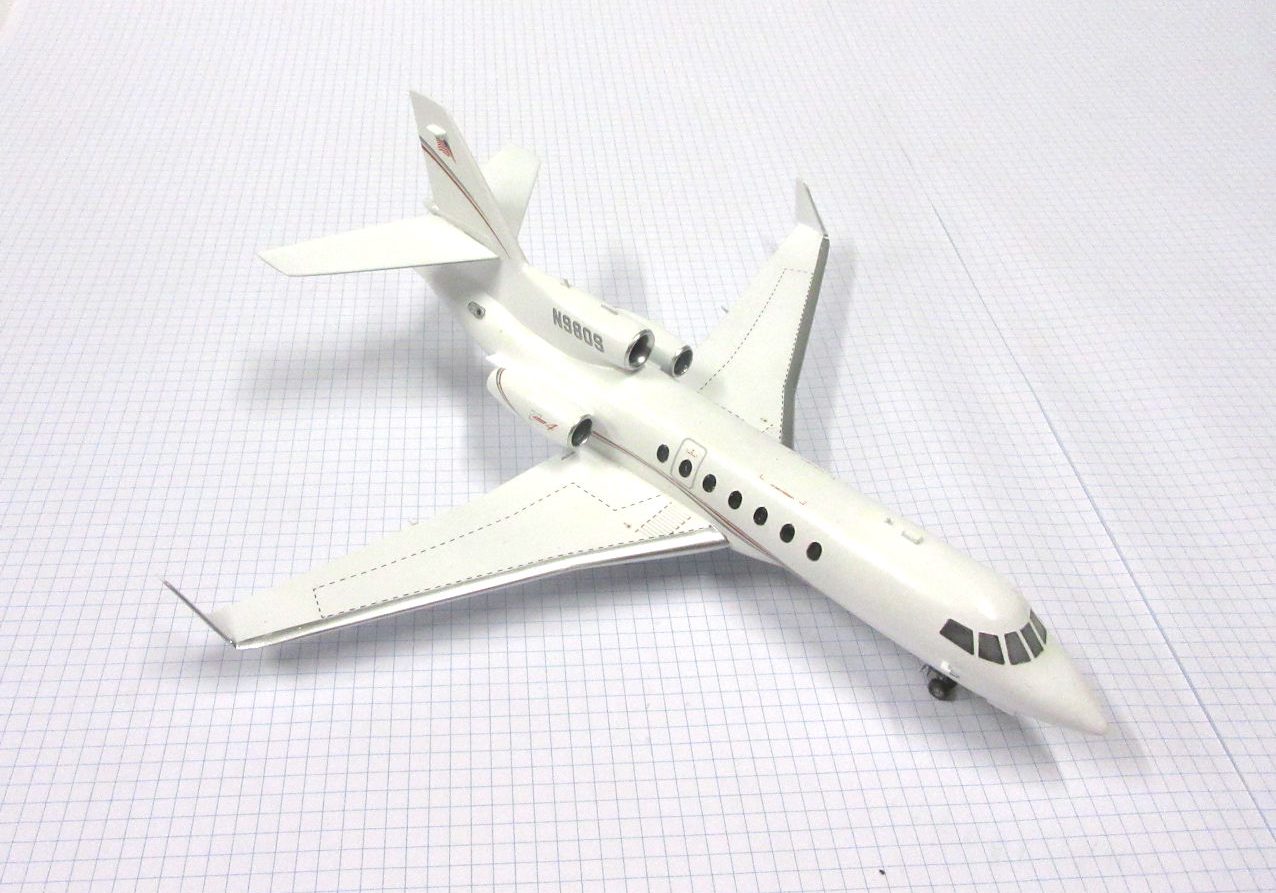History
The Lockheed P38 Lightning was designed to a requirement for an interceptor specifically to combat hostile aircraft at high altitude. The term “interceptor” was used to circumvent the USAAC requirement that pursuit aircraft have only one engine.
The P38 was one of very few United States fighters that had good high-altitude performance at the start of the war.
Lightnings were used in all theatres throughout the war and remained in production for the duration of the war.
Early P-38s suffered from high speed compressibility issues causing the tail to shake violently during dives. Some maneuvers were restricted however the P-38 could out turn and out climb most opponents..
P-38s were utilised for photo reconnaissance, light bombers, night fighters and as pathfinders.
The first P-38s to enter active service were F-4 Photo-reconnaissance versions based in Australia.
Ninety per cent of all aerial film taken over Europe was by a Lightning.
Academy 1/72 kit completed by Steve Pulbrook in 2015.
